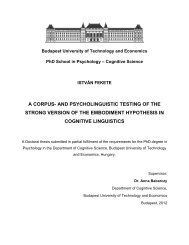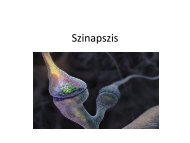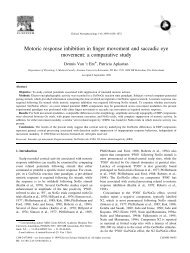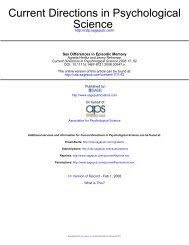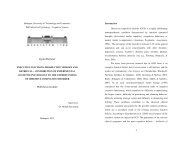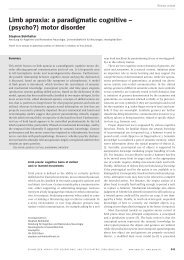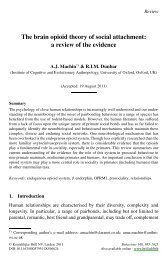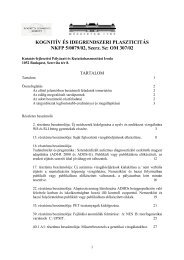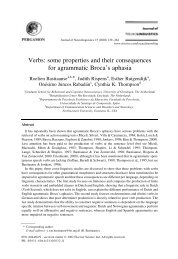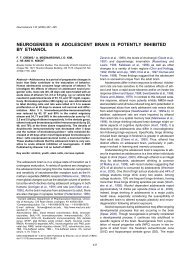Gyula Demeter
Gyula Demeter
Gyula Demeter
Create successful ePaper yourself
Turn your PDF publications into a flip-book with our unique Google optimized e-Paper software.
2.3. Impairment of executive functions in OCD<br />
According to recent findings, the primary cognitive deficit contributing to the OCD<br />
profile is dysfunction of the executive system (Olley, Malhi, & Sachdev, 2007). However,<br />
many studies have found less impaired or intact performance in traditional executive<br />
neuropsychological tasks for OCD patients (for reviews, see Greisberg & McKay, 2003;<br />
Kuelz, Hohagen, & Voderholzer, 2004; Chamberlain, Blackwell, Fineberg, Robbins, &<br />
Sahakian, 2005; in Hungarian <strong>Demeter</strong>, Csigó, Harsányi, Németh, & Racsmány, 2008;<br />
<strong>Demeter</strong>, 2010).<br />
In this overview the most relevant research findings from this field are presented using<br />
the Miyake et al. (2000) psychometric model about executive functions. According to this<br />
approach, traditional neuropsychological executive tasks depend on three main central<br />
executive components: modality-specific updating/monitoring, shifting and inhibition. The<br />
authors used confirmatory factor analyses and structural equation modeling to find evidence<br />
supporting the unity and diversity of executive functions, and for this have preselected well<br />
known simple executive tasks (e.g., plus-minus task, stop-signal task, number-letter task etc.)<br />
which were considered to tape the above mentioned 3 main components of the executive<br />
system, as well as complex executive tasks as the WCST, the Tower of Hanoi, the random<br />
number generation and the dual tasking. The three latent variables were correlated but<br />
separable and contributed in different proportions to the performance on complex executive<br />
tasks. By structural equation modeling they find evidence supporting that WCST was related<br />
especially to shifting, the Tower of Hanoi to inhibition and the random number generation to<br />
updating executive functions.<br />
In the overview below we will focus on these 3 main components and we will not<br />
discuss the results from other main executive domains as planning, problem solving and<br />
decision making.<br />
Updating and monitoring<br />
This component refers to refreshing the content of the working memory. Maintenance of<br />
task-relevant information is accomplished by monitoring and coding relevant incoming<br />
information, and replacing old information that is no longer task-relevant (Morris & Jones,<br />
1990). The importance of updating is that it actively manipulates relevant information in the<br />
working memory, rather than passively storing information (Miyake et al., 2000).<br />
14



